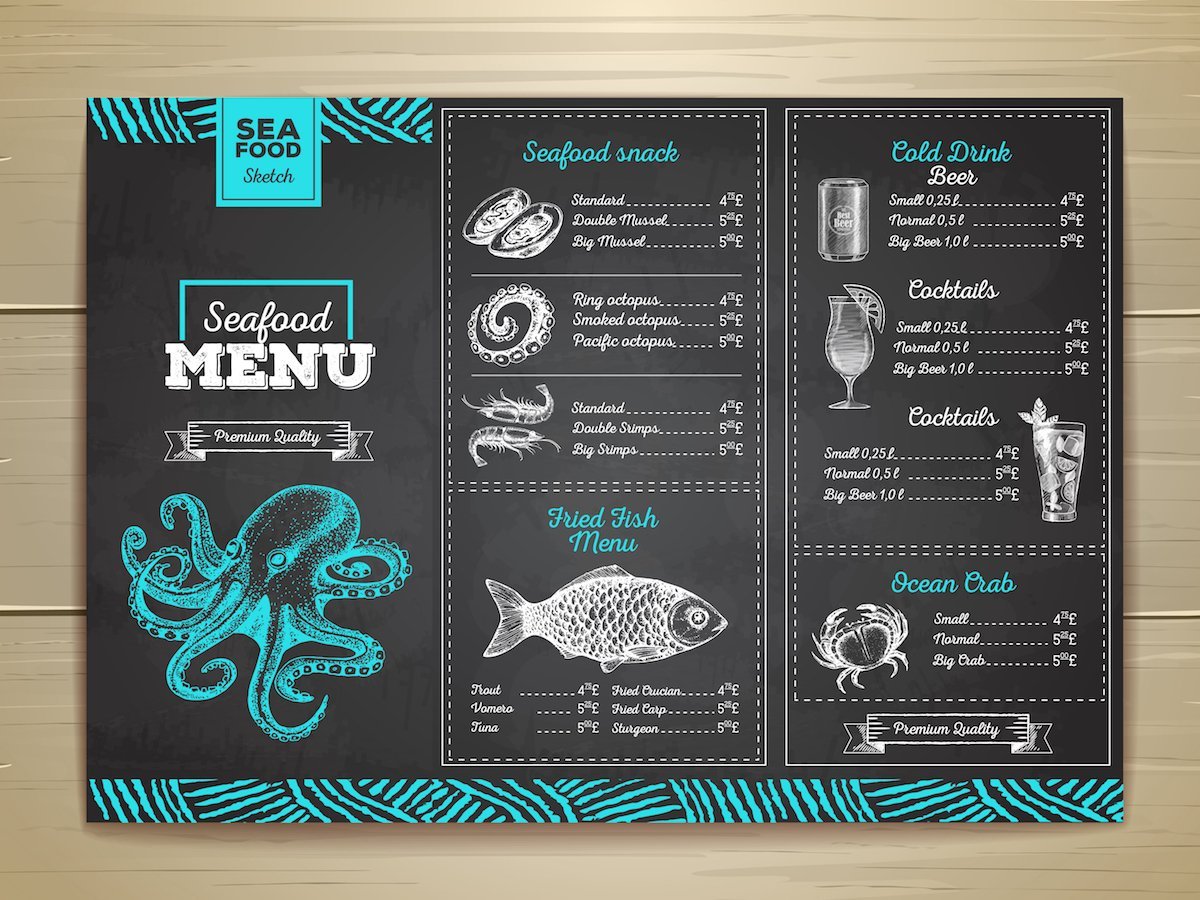In an ideal world, running a successful restaurant would be as easy as offering delicious food and providing excellent service. In the real world, however, it’s a lot more complex than that.
Your menu — the actual, physical list of items you hand to every customer — plays a major role in how well or poorly your food sells. It’s not about how convincing your waitstaff is, or how delicious your food offerings are. Studies have shown that the menu design and layout alone are enough to impact sales in a noticeable way. If you’re looking for ways to boost sales, one major way to make an appreciable change is to delve into menu engineering for a menu redesign.
Menu Engineering
It may sound complex, but menu engineering is really just using menu analysis statistics and some simple psychology to choose where each item should be placed. It’s equal parts psychology and data analysis that can guide you to the most optimal menu design and layout. Let’s break it down:
First, Data Analysis
If you’re looking to boost sales by way of your menu design, the first step is to determine what’s going on currently with your sales. You need to know where you are to figure out how to improve. Hopefully, you have a point of sale system that makes it easy to generate monthly and quarterly reports — if not, it’s time to invest! Otherwise, you’ll need to slog through stacks of receipts to gather the information you’ll need. The four key pieces of information you’ll need are:
- A list of your current menu items
- The number of each menu item sold during a given period of time
- Each menu item’s cost — just the base cost for ingredients
- The price for each item on your menu
From these four numbers, you can determine two very important pieces of information: which items are the most profitable and which are the best sellers. Determining profitability is simple; Subtract the food cost from the menu price for each item to see how much profit you make on a given item (before paying your staff or operating costs). The other number you’ll want to know is how many of each menu item sells within a given timeframe. Between those two items, you’ll get a pretty good picture of which items are selling well and which items should become your best sellers.
Next, Create A Dish Hierarchy
Once you know which items bring in the most profit, it’s time to adjust your menu’s layout. In order to maximize profits, it’s important to put those more-profitable items in positions where they are most likely to be chosen. This is where some menu psychology comes in.
To truly maximize your bottom line, start with the items that are both highly profitable and already sell well. Next, look at the items that are highly profitable but aren’t big sellers. These items may need a new title or description to help rebrand them and make them more appealing. Then, look at your menu staples. These are items that may not have a high profit but sell well. Is there a way to alter those items in a way that will make them more profitable without affecting their popularity? Finally, there are the items on your menu that don’t sell well and aren’t particularly profitable. Can they be overhauled in a helpful way, or should they be scrapped entirely? You’re already reorganizing your menu, so now is a great time to do a bit of spring cleaning. Consider adding in a few new dishes to try out in their place.
Plan Your Layout Carefully
We touched on this in a previous post, but there have been studies showing that specific locations on the menu are more likely to catch a customer’s eye. Plotting your layout with intention can help you sell more of those higher-profit items. Location on the menu, text font and color, and decorative embellishments can all be used to highlight the dishes that will garner you the most profit. However, a word of warning: try not to go too overboard on the embellishments and graphic details. A menu that is too decorated may mean that nothing stands out at all.
The goal of menu engineering is to make sure that a customer’s eye will naturally track toward the dishes you want them to focus on. This increases the likelihood that they will opt for the menu items that bring you the most profit. To do this, try:
- Swapping positioning — The first and last spots in a section are where the eye gravitates first. The upper right-hand portion of each page is also key, as this is where most people start their menu-perusal journey.
- Using multiple fonts/colors — The eye naturally picks out visual elements that stand out as different. For the dishes you most want to highlight, consider using a different font, bolding or italics, or highlighting that dish title with a contrasting color.
- Adding embellishments — Small decorative shapes, text boxes, illustrations, and other embellishments can also help draw the eye to specific parts of your menu. However, these elements, in particular, should be used sparingly. If every menu item is in its own text box, nothing is going to stand out!
Increase Interest
In addition to all of the visual elements you can add, the other valuable tool in your menu-creating toolkit is a mouth-watering description. Customers want to know what ingredients are in each dish so they can make educated decisions around allergies, diets, and personal preferences. Take those basic details and amp them up with adjectives to make mouths water. Using words that describe cooking methods and taste profiles can really increase interest without creating lengthy, overwhelming descriptions. As an example, an “oven-roasted chicken” is going to create a powerful food picture for customers in a way that a “spiced chicken breast” doesn’t. Location positioning and graphic elements should be your primary focus, but you can boost a dish’s selling power with an alluring description.
Consider Menu Size
Back in the 90s, it was all the rage to use those hard-backed menu books with multiple plastic-protected pages inside. Menu engineering has taught us that having a menu with more pages is actually detrimental to guiding your guests’ choices. In fact, menus with three or more pages can affect customers to the point that they hit decision overload and struggle to make a choice at all. This, in turn, can impact the overall perception of their experience at your restaurant in a negative way.
Instead of a multi-page menu book, consider consolidating your menu and rearranging it so it fits on one or two double-sided panels. One larger single-panel menu often encourages guests to linger over the options longer because it’s easier to read than multiple pages that they have to flip between. Our graphic design team has expert knowledge and can help you do this at any time.
Keep Attention Longer
There are also a few things you can do to help keep your customers perusing your menu longer — and longer is better as it typically means customers have more time to find more things they simply have to order, increasing your sales. In terms of keeping attention longer, consider the layout as we mentioned above. Beyond that, making your menus appealing and interesting as a whole can also make a difference. That means fun designs, bold colors, and other elements of visual interest that carry out your brand.
The other thing you can do to hold interest is so simple it seems like common sense: make sure your menus look clean and new. In the restaurant world, that’s a nearly impossible task given the messes than happen so easily. This is where menu materials come into play. Choosing quality, durable menu materials like TerraSlate waterproof paper can help keep your menus looking great day after day. Our waterproof menu options are all grease, solvent, and chemical-proof, not just waterproof. They’re also colorfast, tear-proof, and heat-resistant. We even offer menu printing to get your new menus to you quickly!
Explore all the benefits of TerraSlate waterproof paper, and then shop our waterproof menus and more online!






